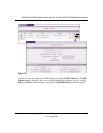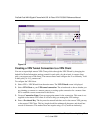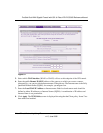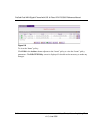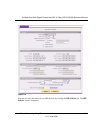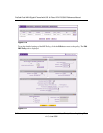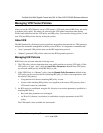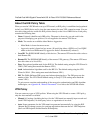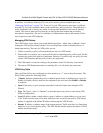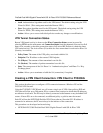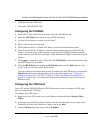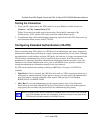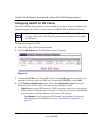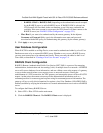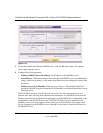
ProSafe Dual WAN Gigabit Firewall with SSL & IPsec VPN FVS336G Reference Manual
Virtual Private Networking Using IPsec 5-15
v1.2, June 2008
In addition, a Certificate Authority (CA) can also be used to perform authentication (see
“Managing Certificates” on page 7-8). To use a CA, each VPN gateway must have a certificate
from the CA. For each certificate, there is both a public key and a private key. The public key is
freely distributed, and is used by any sender to encrypt data intended for the receiver (the key
owner). The receiver then uses its private key to decrypt the data (without the private key,
decryption is impossible). The use of certificates for authentication reduces the amount of data
entry required on each VPN endpoint.
Managing VPN Policies
The VPN Policies screen allows you to add additional policies—either Auto or Manual—and to
manage the VPN policies already created. You can edit policies, enable or disable policies, or
delete them entirely. The rules for VPN policy use are:
1. Traffic covered by a policy will automatically be sent via a VPN tunnel.
2. When traffic is covered by two or more policies, the first matching policy will be used. (In this
situation, the order of the policies is important. However, if you have only one policy for each
remote VPN Endpoint, then the policy order is not important.)
3. The VPN tunnel is created according to the parameters in the SA (Security Association).
4. The remote VPN Endpoint must have a matching SA, or it will refuse the connection.
VPN Policy Table
Only one Client Policy may configured at a time (noted by an “*” next to the policy name). The
Policy Table contains the following fields:
• ! (Status). Indicates whether the policy is enabled (green circle) or disabled (grey circle). To
Enable or Disable a Policy, check the box adjacent to the circle and click Enable or Disable,
as required.
• Name. Each policy is given a unique name (the Connection Name when using the VPN
Wizard).
• Type. The Type is “Auto” or “Manual” as described previously (Auto is used during VPN
Wizard configuration).
• Local. IP address (either a single address, range of address or subnet address) on your local
LAN. Traffic must be from (or to) these addresses to be covered by this policy. (The Subnet
address is supplied as the default IP address when using the VPN Wizard).
• Remote. IP address or address range of the remote network. Traffic must be to (or from) these
addresses to be covered by this policy. (The VPN Wizard default requires the remote LAN IP
address and subnet mask).



